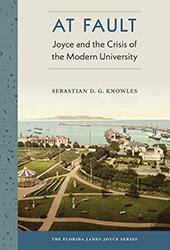Picturing Cuba: Art, Culture, and Identity on the Island and in the Diaspora
Edited by Jorge Duany
“An excellent, wide-ranging introduction to Cuban art, its historiography, and the politics of its production, reception, and exhibition. . . . The essays, ordered chronologically, provide a clear, generously illustrated account of the varied attempts through time to isolate and figure cubanidad in the visual arts. . . . Highly recommended.”—Choice
“An insightfully curated and richly illustrated compilation of fourteen essays by leading Cuban studies scholars. . . . A veritable primer for anyone who is interested in Cuba’s artistic production.”—ARLIS/NA Reviews
“Compelling and relevant. Takes readers on a journey through the history of Cuban art’s significance, demonstrating how art has mirrored the cultural life of the country as well as how politics affect the production of art itself.”—Isabel Alvarez Borland, coeditor of Cuban-American Literature and Art: Negotiating Identities
The Shadow of Selma
Edited by Joe Street and Henry Knight Lozano
“A shrewd and often-fascinating collection.”—Journal of American History
“An invaluable work on Black resistance in film, mass media, political policies, and leadership in the civil rights movement. . . . This study not only furthers ideas of race, class, and autonomy, but it also forces the reader to reexamine the timeline and classic perspectives of the legacy of Black agency during the civil rights movement, generally, and in Selma specifically.”—Journal of Southern History
“Deftly interrogates the past, present, and future of race and justice in the United States through the lens of the Selma campaign’s various meanings and legacies.”—John A. Kirk, author of Redefining the Color Line: Black Activism in Little Rock, Arkansas, 1940–1970
“A fascinating and thought-provoking reflection on the dramatic events, popular memory, and ambiguous legacy of one of the pivotal campaigns of the civil rights movement. By exploring the story of Selma from a wide range of original perspectives, this timely and engaging collection makes a valuable contribution to the way we understand the broader struggle for civil rights in the past and present. “—Stephen Tuck, author of The Night Malcolm X Spoke at the Oxford Union: A Transatlantic Story of Antiracist Protest
Slave Traffic in The Age of Abolition: Puerto Rico, West Africa, and the Non-Hispanic Caribbean, 1815-1859
Joseph C. Dorsey
“Very well researched and argued. . . . Required reading for those interested in slavery in Puerto Rico and the Caribbean.”—Slavery and Abolition
“Dorsey’s book has the rare merit of attempting to integrate all phases of the movement of people from Africa to the Americas, albeit for a forty-five year period for one Caribbean island, Puerto Rico. . . . It addresses non-African immigration as well, with the whole approached from a commendable transnational perspective.”—American Historical Review
“Convincingly argues that the British focus upon West Africa and Cuba, combined with the long absence of any diplomatic presence on the smaller island, allowed Puerto Ricans and foreign merchants to develop a trade network with the non-Hispanic Caribbean and West Africa.”—Hispanic American Historical Review
“Sheds significant new light on the subject by piecing together fragmented and contradictory data scattered in Portuguese, English, French, and Dutch colonial archives. . . . An important contribution both to Caribbean and African studies, as well as to the scholarship on slavery.”—H-Net
“Dorsey’s excellent and detailed study of Puerto Rico deftly illustrates the international dimensions of the Caribbean slave trade during the nineteenth century.”—International History Review
At Fault: Joyce and the Crisis of the Modern University
Sebastian D. G. Knowles
“This is the damnedest book. . . . Giddy and audacious.”—James Joyce Literary Supplement
“Extraordinarily learned and clever readings.”—James Joyce Quarterly
“Offers an array of insights, observations, and intuitions, and is bursting at the seams with one smart idea or curious fact after another.”—John Gordon, author of Joyce and Reality: The Empirical Strikes Back
“Witty and perceptive considerations of Joyce’s works via the prevailing metaphor of the centrifuge. Joyce’s works similarly reveal a wide range of backgrounds and influences, and their impact and interpretation have radiated outward throughout the modern era.”—Thomas Jackson Rice, author of Cannibal Joyce
Early Human Life on the Southeastern Coastal Plain
Edited by Albert C. Goodyear and Christopher R. Moore
“If you are interested in the first ~7,000 years of North American prehistory, you need this book.”—American Antiquity
“A useful reference for ongoing scholarship into the earliest cultural periods in Southeastern USA.”—Antiquity
“Explores the current diversity of academic thought on the early human occupation of the American Southeast.”—Ervan Garrison, author of Techniques in Archaeological Geology
“The early occupation of the Southeast for too long has been treated as essentially invariable, and contributors to this volume address this with new methods and data.”—Philip J. Carr, coeditor of Contemporary Lithic Analysis in the Southeast: Problems, Solutions, and Interpretations
Pathways to Complexity: A View from the Maya Lowlands
Edited by M. Kathryn Brown and George J. Bey III
“Richly detailed. . . . Bring[s] together recent advancements in studies of the development of Maya civilisation.”—Antiquity
“An impressive conspectus of expertise spanning Maya fieldwork from the Valley of Guatemala to northern Yucatan.”—Latin American Antiquity
“Packed with data, presented in relatively concise chapters and coming from a wide geographical range, including not just the Southern, Central, and Northern Lowlands, but also a case from the Guatemalan Highlands.”—Journal of the Royal Anthropological Institute
“A treasure trove of new information and fresh ideas about the origins of Maya civilization. Pathways to Complexity will help set the agenda for investigation of ancient Maya origins for many years to come.”—Christopher A. Pool, author of Olmec Archaeology and Early Mesoamerica
“An exciting volume with new discoveries, surprising evidence, bold interpretations, and much internal debate. These chapters will pull any serious archaeologist into the controversies concerning the rise of early Maya civilization.”—Arthur A. Demarest, Ingram Chair in Anthropology, Vanderbilt University






